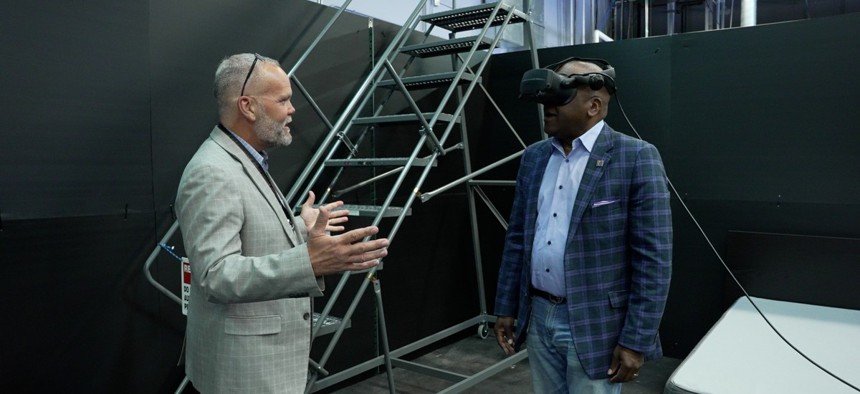NIST, Commerce Launch Emergency Response Training Center with Virtual Reality

NIST
The Public Safety Immersive Test Center will combine virtual reality technologies with more tactile simulations to improve emergency responses.
The U.S. Department of Commerce launched a new center devoted to the research and development of technologies designed specifically to support public safety emergencies and responses.
Headquartered in Boulder, Colorado, the Public Safety Immersive Test Center is part of a collaboration between Commerce’s First Responder Network Authority and the National Institute of Standards and Technology.
NIST’s Public Safety Communications Research Division will helm the center’s initiatives to plan education, research and training for public safety agencies across the country to support intuitive and efficient user interfaces within public safety operations. First responders and technologists will collaborate on effective training technologies to improve first responses.
“When seconds count, situational awareness can be a matter of life or death for first responders,” Jeff Bratcher, the FirstNet Authority chief network and technology officer. “We are proud to partner with NIST on this state-of-the-art facility and provide first responders with an immersive virtual experience to help them prepare for those critical moments. The FirstNet Authority is dedicated to advancing technologies and innovative ways to ensure first responders have the tools they need for their lifesaving mission.”
The Public Safety Immersive Test Center will use physical interactions to simulate real-life scenarios which will in turn inform technologies developed to respond to public safety emergencies.
The facility will be outfitted with a motion capture system and optical tracking cameras, along with a bevy of virtual reality devices like headsets. Technologies like these will help add a tactile component to emergency simulations, ranging from search and rescue to terrorist attacks.
Other technologies like 5G broadband, edge computing and WebXR applications are also set to be incorporated into the training operations.
“This facility enables us to take our research to the next level by allowing natural interactions,” said NIST’s Scott Ledgerwood. “Traditional virtual reality simulations required controllers for interaction, which didn’t translate well to real-life scenarios. In this new facility, users can walk or crawl throughout the space, physically touch walls and furniture, and pick up props like fire nozzles or dummies. This approach will improve measures and build confidence in the test results for translations of technologies to the real world.”






